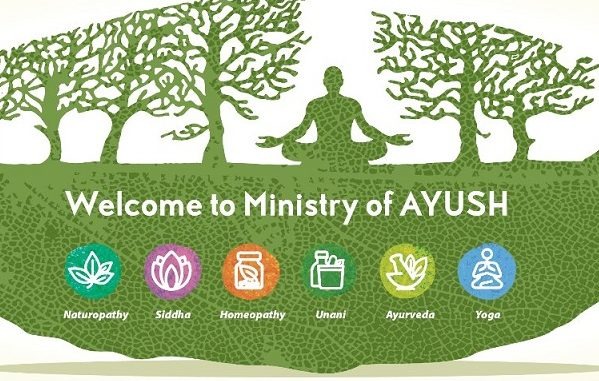The Ministry of AYUSH (Ayurveda, Yoga & Naturopathy, Unani, Siddha, and Homeopathy) is transforming India’s healthcare landscape through a robust three-pillar approach—Education, Research, and Outreach. By enhancing institutional frameworks, funding scientific validation, and expanding access to traditional healthcare, the Ministry is building a future-ready, holistic healthcare ecosystem.
Overview
| Pillar | Key Initiatives |
|---|---|
| Education | New institutes, NAAC-accredited colleges, updated curriculum |
| Research | Standardization, pharmacopoeias, clinical research, safety & efficacy data |
| Outreach | Rural penetration, awareness campaigns, international yoga & wellness efforts |
Table of Contents
Education Reforms: Upgrading AYUSH Academics
The Ministry has launched multiple initiatives to modernize and mainstream traditional medicine education in India:
- New Institutions Established:
- National Commission for Indian System of Medicine (NCISM)
- National Commission for Homoeopathy (NCH)
- National Institute of Sowa-Rigpa (NIS), Leh
- Quality-Driven Focus:
- Faculty training programs
- Curriculum modernization across Ayurveda, Unani, Siddha, Homeopathy
- Infrastructure upgrades in existing colleges
- Accreditation Milestone:
- Over 100 AYUSH colleges accredited by the National Assessment and Accreditation Council (NAAC)
Building Scientific Evidence for AYUSH Systems
The AYUSH Ministry has significantly enhanced its research ecosystem with a focus on standardization and evidence generation.
Key Developments:
- Core Research Institutions:
- Central Council for Research in Ayurvedic Sciences (CCRAS)
- Dedicated councils for Homeopathy, Siddha, Unani, Yoga & Naturopathy
- Standardized Publications:
- Ayurvedic Pharmacopoeia of India
- Unani Pharmacopoeia of India
- Siddha Formulary of India
- Focus Areas:
- Scientific validation of traditional practices
- Safety and efficacy trials
- Data collection for integration with allopathic systems
Making AYUSH Accessible to Every Indian
The third pillar of the Ministry’s initiative involves connecting AYUSH systems to the grassroots and international audiences.
Highlights:
- Community-Level Expansion:
- Strengthening healthcare services in rural and underserved areas
- Integrating AYUSH services into existing primary health systems
- Mass Awareness Campaigns:
- Educating the public on preventive, promotive, and curative benefits of AYUSH
- Encouraging AYUSH adoption via community programs and workshops
- Global Footprint Expansion:
- International Yoga Day celebrated in over 150 countries
- Strategic collaborations with international health bodies
FAQs About AYUSH
What is the main objective of the AYUSH Ministry’s three-pillar strategy?
Answer: To create a sustainable and evidence-backed healthcare system that combines traditional medicine with modern practices, while ensuring accessibility and affordability for all.
How is AYUSH education being modernized?
Answer: Through the creation of national commissions (NCISM, NCH), faculty development, modern infrastructure, and NAAC accreditation for over 100 AYUSH colleges.
What are the pharmacopoeias published by AYUSH?
Answer: Ayurvedic Pharmacopoeia of India, Unani Pharmacopoeia of India, and Siddha Formulary of India, aimed at standardizing formulations and ensuring quality.
How is AYUSH reaching rural India?
Answer: By integrating AYUSH services into public health centers, launching mobile healthcare vans, and deploying AYUSH practitioners in underserved regions.
How is AYUSH gaining global recognition?
Answer: Through international events like International Yoga Day and strategic partnerships promoting Indian traditional medicine worldwide.
Key Benefits of AYUSH Initiatives
- Promotes holistic and preventive healthcare
- Strengthens healthcare infrastructure and education
- Supports evidence-based practice and clinical safety
- Increases global recognition of Indian traditional medicine
- Builds public trust through quality assurance and outreach



